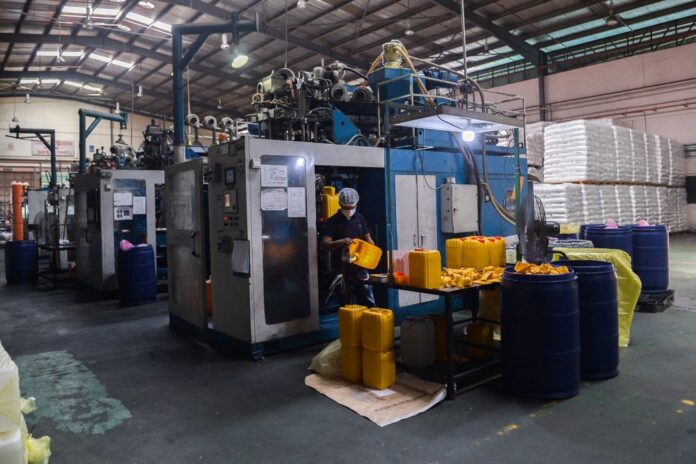A worker is seen at his station at Mapo Industries Sdn Bhd’s plastic container manufacturing plant in Port Klang July 8, 2021. — Picture by Miera Zulyana
KUALA LUMPUR, Aug 26 — The Producer Price Index (PPI), which measures the cost of goods at the factory gate that are produced locally, has continued to remain high in Malaysia for July with a 11.7 per cent year-on-year growth, largely due to the higher prices of commodities such as crude and palm oil, official statistics today showed.
The Department of Statistics Malaysia (DoSM) said that the July PPI figures were an increase from the 11.5 per cent year-on-year figure recorded for June.
This was mainly contributed by the prices of primary commodities, namely crude oil (64.4 per cent), fresh fruit bunches (57.3 per cent), and crude palm oil (42.7 per cent), DoSM said.
The DoSM also listed the year-on-year PPI figures according to five sectors.
Malaysia’s chief statistician Datuk Seri Mohd Uzir Mahidin highlighted that the mining sector’s PPI index in July rose 57.7 per cent, due to higher prices of natural gas and continuous increase in prices of crude oil.
As for the agriculture, forestry and fishing sector’s PPI index, there was a double digit growth of 31.5 per cent year-on-year for July, which was attributed to an increase in prices of fresh fruit bunches and other commodities.
“In addition, the increase in the manufacturing index was contributed by higher prices of primary commodities and construction-related commodities (7.1 per cent).
“In terms of utility indices, water supply and electricity and gas supply each rose 1.3 per cent and 0.2 per cent,” he said.
As for the PPI local production figures compared month-on-month, DoSM said there was a marginal increase of 0.6 per cent in July this year when compared against the 0.2 per cent recorded in June this year
“This positive growth was due to the mining index which grew by 3.9 per cent, followed by the indices of agriculture, forestry and fishing and manufacturing which increased by 2.2 per cent and 0.2 per cent respectively.
“In addition, the indices of electricity and gas supply and water supply declined by 0.2 per cent,” he said.



